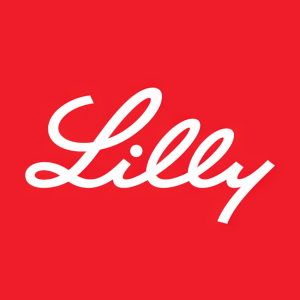Lilly's oral GLP-1, orforglipron, showed compelling efficacy and a safety profile consistent with injectable GLP-1 medicines, in complete Phase 3 results published in The New England Journal of Medicine
Rhea-AI Summary
Positive
- Significant A1C reductions of 1.3% to 1.6% across all doses from baseline of 8.0%
- Substantial weight loss of 16.0 lbs (7.9%) at highest dose
- High treatment success with up to 76.2% of participants achieving target A1C <7%
- First oral GLP-1 without food/water restrictions to complete Phase 3
- Early onset of benefits seen within 4 weeks of treatment
- On track for regulatory submissions in 2025-2026
Negative
- Higher discontinuation rates vs placebo (4-8% vs 1%) due to adverse events
- Significant gastrointestinal side effects including diarrhea (up to 26%), nausea (up to 18%), and vomiting (up to 14%)
- Weight loss plateau not yet reached, requiring longer-duration studies
Insights
Lilly's oral GLP-1 shows strong Phase 3 results with significant A1C reduction and weight loss, potentially transforming diabetes treatment.
The Phase 3 ACHIEVE-1 trial results for Lilly's orforglipron represent a significant advancement in diabetes treatment. As the first oral small molecule GLP-1 receptor agonist without food/water restrictions to complete Phase 3 trials, orforglipron demonstrated compelling efficacy with A1C reductions of 1.3% to 1.6% from baseline across doses.
The early onset of action (improvements seen by week 4) is particularly noteworthy for diabetes management. At the highest dose, 76.2% of patients achieved the ADA target A1C of <7%, and remarkably, 25.8% reached normal A1C levels (<5.7%) - an impressive normalization rate suggesting potential disease-modifying effects.
Weight loss results were clinically meaningful, with patients on the highest dose losing an average of 16 pounds (7.9%) by week 40. Importantly, patients hadn't yet reached a weight plateau, suggesting continued benefits may be possible with longer treatment.
The safety profile aligns with injectable GLP-1s, with primarily mild-to-moderate gastrointestinal side effects occurring mainly during dose escalation. Discontinuation rates due to adverse events were relatively low (4-8% across doses vs. 1% placebo), and no hepatic safety signals emerged - addressing a key concern for oral metabolic drugs.
The convenience of a once-daily pill without food/water restrictions represents a significant advantage over current oral GLP-1 options and could substantially increase patient acceptance compared to injectables. With upcoming comparative trials against dapagliflozin and oral semaglutide plus obesity-specific trials, orforglipron could potentially become a first-line therapy for both diabetes and obesity management.
The investigational once-daily pill lowered A1C by an average of
In ACHIEVE-1, orforglipron also led to an average weight loss of 16.0 lbs (
The safety profile of orforglipron was consistent with the established GLP-1 class
In the study, orforglipron met the primary endpoint of superior A1C reduction compared to placebo at 40 weeks, lowering A1C by
"The ACHIEVE-1 trial demonstrated that orforglipron, a novel oral small-molecule GLP-1, achieved clinically meaningful reductions in A1C and body weight over 40 weeks in adults with type 2 diabetes," said Dr. Julio Rosenstock, senior scientific advisor for Velocity Clinical Research at Medical City Dallas, clinical professor of medicine, University of Texas Southwestern Medical Center, and lead trial investigator. "The early onset of glycemic improvement, observed as soon as four weeks, reinforces the therapeutic potential of orforglipron as an effective, oral GLP-1 therapy for early type 2 diabetes treatment. These findings support further investigation in broader populations and longer-duration studies."
Full Results | |||||
Orforglipron 3 mg | Orforglipron 12 mg | Orforglipron 36 mg | Placebo
| ||
Primary Endpoint | |||||
A1C reduction from baseline of 8.0 %i | Efficacy estimand | 1.3 % | 1.6 % | 1.5 % | 0.1 % |
Treatment-regimen estimand4 | 1.2 % | 1.5 % | 1.5 % | 0.4 % | |
Key Secondary Endpointsii | |||||
Percent weight reduction from baseline of 90.2 kg (198.9 lbs)i,iii | Efficacy estimand | 4.7 % | 6.1 % | 7.9 % | 1.6 % |
Treatment-regimen estimand | 4.5 % | 5.8 % | 7.6 % | 1.7 % | |
Weight reduction from baseline of 90.2 kg (198.9 lbs)i,iii | Efficacy estimand | 4.4 kg | 5.5 kg | 7.3 kg | 1.3 kg (2.9 lbs) |
Treatment-regimen | 4.2 kg (9.3 lbs) | 5.2 kg (11.5 lbs) | 7.2 kg (15.8 lbs) | 1.5 kg (3.4 lbs) | |
Percent of participants achieving A1C <7 %i | Efficacy estimand | 72.9 % | 76.2 % | 74.9 % | 28.0 % |
Treatment-regimen estimand | 68.1 % | 72.9 % | 72.7 % | 33.0 % | |
Percent of participants achieving A1C ≤6.5 %i,ii | Efficacy estimand | 61.5 % | 62.3 % | 66.0 % | 13.5 % |
Treatment-regimen | 56.9 % | 58.1 % | 61.9 % | 14.9 % | |
Percent of participants | Efficacy estimand | 17.7 % | 25.8 % | 23.9 % | 3.8 % |
Treatment-regimen estimand | 16.8 % | 23.9 % | 21.5 % | 3.8 % | |
Fasting serum glucose of 147.5 mg/dLi | Efficacy estimand | 30.6 mg/dL | 37.4 mg/dL | 37.8 mg/dL | 1.1 mg/dL |
Treatment-regimen estimand | 30.7 mg/dL | 36.5 mg/dL | 34.7 mg/dL | 10.8 mg/dL | |
iSuperiority test was adjusted for multiplicity.
iiData from the full list of key secondary endpoints are available in the publication.
iiiPercent of participants achieving A1C <
"This convenient once-daily pill with no restrictions on food and water intake could be an option for millions of people with type 2 diabetes who prefer oral medications over injectables," said Jeff Emmick, M.D., Ph.D., senior vice president of product development at Lilly. "The positive ACHIEVE-1 results position orforglipron as a potential treatment option with meaningful A1C and weight reduction, and a safety profile similar to injectable GLP-1 therapies. We look forward to the four remaining global readouts from the ACHIEVE program, as well as results of the ATTAIN program in obesity, and working with regulators to bring this once-daily oral GLP-1 to people around the world."
The overall safety profile of orforglipron in ACHIEVE-1 was consistent with the established GLP-1 class. The most common adverse events for participants treated with orforglipron (3 mg, 12 mg and 36 mg, respectively) were diarrhea (
Later this year, Lilly expects to share topline results from ACHIEVE-2, evaluating orforglipron compared with dapagliflozin, and ACHIEVE-3, evaluating orforglipron compared to oral semaglutide, both in adults with type 2 diabetes inadequately controlled with metformin. ATTAIN-1 and ATTAIN-2, evaluating orforglipron for weight management, will also be shared in the third quarter of this year. Lilly remains on track to submit orforglipron for weight management to global regulatory agencies by the end of this year and for the treatment of type 2 diabetes in 2026.
About orforglipron
Orforglipron (or-for-GLIP-ron) is an investigational, once-daily small molecule (non-peptide) oral glucagon-like peptide-1 receptor agonist that can be taken any time of the day without restrictions on food and water intake.5 Orforglipron was discovered by Chugai Pharmaceutical Co., Ltd. and licensed by Lilly in 2018. Chugai and Lilly published the preclinical pharmacology data of this molecule together.6 Lilly is running Phase 3 studies on orforglipron for the treatment of type 2 diabetes and for weight management in adults with obesity or overweight with at least one weight-related medical problem. It is also being studied as a potential treatment for obstructive sleep apnea and hypertension in adults with obesity.
About ACHIEVE-1 and the ACHIEVE clinical trial program
ACHIEVE-1 (NCT05971940) is a Phase 3, 40-week, randomized, double-blind, placebo-controlled trial comparing the efficacy and safety of orforglipron 3 mg, 12 mg and 36 mg as monotherapy to placebo in adults with type 2 diabetes and inadequate glycemic control with diet and exercise alone. The trial randomized 559 participants across the
The ACHIEVE Phase 3 global clinical development program for orforglipron has enrolled more than 6,000 people with type 2 diabetes across five global registration trials. The program began in 2023 with results anticipated later this year and into 2026.
About Lilly
Lilly is a medicine company turning science into healing to make life better for people around the world. We've been pioneering life-changing discoveries for nearly 150 years, and today our medicines help tens of millions of people across the globe. Harnessing the power of biotechnology, chemistry and genetic medicine, our scientists are urgently advancing new discoveries to solve some of the world's most significant health challenges: redefining diabetes care; treating obesity and curtailing its most devastating long-term effects; advancing the fight against Alzheimer's disease; providing solutions to some of the most debilitating immune system disorders; and transforming the most difficult-to-treat cancers into manageable diseases. With each step toward a healthier world, we're motivated by one thing: making life better for millions more people. That includes delivering innovative clinical trials that reflect the diversity of our world and working to ensure our medicines are accessible and affordable. To learn more, visit Lilly.com and Lilly.com/news, or follow us on Facebook, Instagram and LinkedIn. P-LLY
- The efficacy estimand represents the treatment effect had on all participants who adhered to the study drug (with possible dose interruptions) for 40 weeks without initiating additional antihyperglycemic medications (>14 days of use).
- American Diabetes Association. Standards of Care in Diabetes—2020 Abridged for Primary Care Providers. Clinical Diabetes 2020; 38(1):10–38. https://doi.org/10.2337/cd20-as01
- Percent of participants achieving A1C <
5.7% across all doses was not controlled for Type 1 error. - The treatment-regimen estimand represents the estimated average treatment effect regardless of treatment discontinuation or initiation of additional antihyperglycemic medications.
- Ma X, Liu R, Pratt EJ, Benson CT, Bhattachar SN, Sloop KW. Effect of Food Consumption on the Pharmacokinetics, Safety, and Tolerability of Once-Daily Orally Administered Orforglipron (LY3502970), a Non-peptide GLP-1 Receptor Agonist. Diabetes Ther. 2024 Apr;15(4):819-832. https://doi.org/10.1007/s13300-024-01554-1. Epub 2024 Feb 24. PMID: 38402332; PMCID: PMC10951152.
- T. Kawai, B. Sun, H. Yoshino, D. Feng, Y. Suzuki, M. Fukazawa, S. Nagao, D.B. Wainscott, A.D. Showalter, B.A. Droz, T.S. Kobilka, M.P. Coghlan, F.S. Willard, Y. Kawabe, B.K. Kobilka, & K.W. Sloop, Structural basis for GLP-1 receptor activation by LY3502970, an orally active nonpeptide agonist, Proc. Natl. Acad. Sci.
U.S.A. 117 (47) 29959-29967, https://doi.org/10.1073/pnas.2014879117 (2020).
Cautionary Statement Regarding Forward-Looking Statements
This press release contains forward-looking statements (as that term is defined in the Private Securities Litigation Reform Act of 1995) about orforglipron as a potential treatment for adults with type 2 diabetes, and the timeline for future readouts, presentations, and other milestones relating to orforglipron and its clinical trials and reflects Lilly's current beliefs and expectations. However, as with any pharmaceutical product, there are substantial risks and uncertainties in the process of drug research, development, and commercialization. Among other things, there is no guarantee that planned or ongoing studies will be completed as planned, that future study results will be consistent with study results to date, that orforglipron will prove to be a safe and effective treatment for type 2 diabetes, that orforglipron will receive regulatory approval, or that Lilly will execute its strategy as expected. For further discussion of these and other risks and uncertainties that could cause actual results to differ from Lilly's expectations, see Lilly's Form 10-K and Form 10-Q filings with the United States Securities and Exchange Commission. Except as required by law, Lilly undertakes no duty to update forward-looking statements to reflect events after the date of this release.
Trademarks and Trade Names
All trademarks or trade names referred to in this press release are the property of the company, or, to the extent trademarks or trade names belonging to other companies are referenced in this press release, the property of their respective owners. Solely for convenience, the trademarks and trade names in this press release are referred to without the ® and ™ symbols, but such references should not be construed as any indicator that the company or, to the extent applicable, their respective owners will not assert, to the fullest extent under applicable law, the company's or their rights thereto. We do not intend the use or display of other companies' trademarks and trade names to imply a relationship with, or endorsement or sponsorship of us by, any other companies.
Refer to: | Brooke Frost; brooke.frost@lilly.com; 317-432-9145 (Media) |
Michael Czapar; czapar_michael_c@lilly.com; 317-617-0983 (Investors) |
![]() View original content to download multimedia:https://www.prnewswire.com/news-releases/lillys-oral-glp-1-orforglipron-showed-compelling-efficacy-and-a-safety-profile-consistent-with-injectable-glp-1-medicines-in-complete-phase-3-results-published-in-the-new-england-journal-of-medicine-302487392.html
View original content to download multimedia:https://www.prnewswire.com/news-releases/lillys-oral-glp-1-orforglipron-showed-compelling-efficacy-and-a-safety-profile-consistent-with-injectable-glp-1-medicines-in-complete-phase-3-results-published-in-the-new-england-journal-of-medicine-302487392.html
SOURCE Eli Lilly and Company









